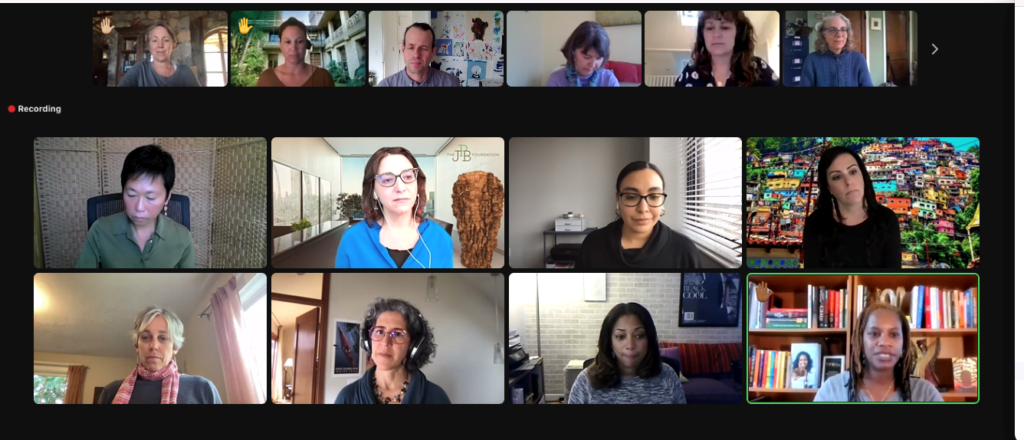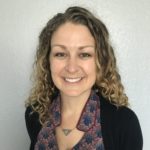BY Kerry Hastings and Ann Fowler Wallace, TFN Urban Water Funders and GREEN working groups
On February 16 and 17, funders from TFN’s GREEN and Urban Water Funders working groups came together to deepen learning and connections. This virtual gathering was the second annual convening where these two working groups met together, recognizing how interconnected their interests are. Both groups focus on disparate climate impacts on low-income communities and communities of color, the importance of community-led solutions, and the need for increased and targeted investments into those same communities to transform them into hubs of sustainability, health, equity and innovation.
Nearly every funder arrived with a hunger to root ourselves in this moment of extreme disparity and growing climate-fueled disasters, as well as one of unprecedented investment coming down from the federal government into states and communities. We used our two days to learn from frontline community leaders, government officials, and one another. Our sessions provided opportunities to hear from members of the White House’s Environmental Justice Advisory Council (WHEJAC), Hawaiians leading climate resilience and OneWater work in Honolulu, and funders growing their racial equity muscles as they center equity in their institutions and implement equitable grantmaking practices. We also held several opportunities for breakouts for deeper funder connection and learning.
Our two days together left funders feeling inspired and motivated both by the ideas and solutions proposed, as well as the work ahead to implement those solutions. Below are a few of the themes on how philanthropy can step into its role with the greatest impact, and ways that funders want to dive deeper in learning and implementation of these solutions.
- Supporting workforce development and inclusive leadership pathways. Philanthropy can support the next generation of water leaders by investing in leadership development and workforce pathways. There was particular interest in learning beyond the water and climate sectors and tapping into expertise of jobs programs such as Americorps or Public Allies to support a more diverse workforce.
- Get frontline organizations what they need most. The verdict is clear: nonprofit organizations (NGOs), especially those on the front lines, need unrestricted, multi-year grants to do their most impactful work. In addition, frontline leaders called on philanthropy to support endowments for environmental justice groups to lessen the ever-present burden of fundraising, as well as support self-care, career pathways and wage growth within NGOs so that great staff don’t have to leave movement work to advance in their careers.
- Utilize intermediaries as a tool for targeted investments. For those funders who cannot build direct relationships with every community where they would like to move funds, intermediaries – when used thoughtfully – can be a way to drive investment to and build capacity of smaller organizations and ecosystems of organizations that serve places or specific communities, such as Native American intermediaries. Intermediaries can also serve as a path to get federal and state resources directed towards community-led solutions.
- Support government agencies directly. A powerful image of an hourglass was shared by a WHEJAC member during our opening session; at the top of the hourglass is the pledge and commitment of the federal government to do something big on equity, and at the bottom are the billions of dollars ready to go out the door. In the middle, however, is the bottleneck of limited staff capacity to make the commitment a reality. How can philanthropy help expand this pinch point? Foundations can loan executives or support additional staff from talented NGOs, and through advocacy and funding of community groups, support de-siloing of government agencies to encourage collaboration at the local, state and national level.
- Commit to and invest in racial and economic equity. Funders continue to hunger for more peer learning on how to deepen their equitable grantmaking practices and internal operations. Funders discussed how to make the case to trustees, how to support ongoing evaluation to ensure new practices are meeting their intended goals, and ways to use various tools to identify spots for improvement, such as the Meyer Memorial Trust’s DEI Spectrum Tool.
- Protect democracy. It is not an exaggeration to say that this moment is different than any other in our lifetimes, as we watch a renewed attack on democracy in our nation and around the globe. While funders each have their specific program and issue areas, the larger context of protecting our democracy must be considered and invested in, including a focus on the judiciary and the dangers that lie ahead for progressive causes and Black, Indigenous and other People of Color communities.

We can’t wait to continue these discussions and others. Many thanks to our planning committee: Alejandra Hernandez, Kresge Foundation; Naeema Campbell, Geraldine R. Dodge Foundation; Nate Boon, William Penn Foundation; Dana Okano, Hawaii Community Foundation; and John Mitterholzer, George Gund Foundation.
Learn more
To learn more about our two working groups and sign up for our newsletters, visit the Urban Water Funders and GREEN working groups pages.
About the Authors

Ann Fowler Wallace is TFN’s director of programs. Ann manages TFN’s working groups and regional networks, is part of the GREEN working group team, and serves on the Governance Committee and Grant Selection Committee for the Partners for Places grant program.
 Kerry Hastings is the program lead for TFN’s Urban Water Funders working group, as well as the program manager for Smart Growth California, a TFN initiative.
Kerry Hastings is the program lead for TFN’s Urban Water Funders working group, as well as the program manager for Smart Growth California, a TFN initiative.
“Hawaii Big Island” by szeke is licensed under CC BY-SA
